#lincolncollection
Can you imagine sending your brother, father, grandparent, or friend off to war? The American Civil War, the bloodiest battle in American history, determined what nation we would become. Would we become the largest holder of slaves in the New World, or would we abide by our Declaration of Independence where all men were created with an equal right to life, liberty, and the pursuit of happiness? I think you know how the story ends, but at what cost? Approximately 750,000 lives were lost by the end of the war. During the time after the war, many grief-stricken families turned to a wide spectrum of coping mechanisms. One of them was Spiritualism. Spiritualism, at the time, had 8 million believers in both the United States and Europe. Americans sought comfort in performing séances knowing there was a better life for their loved ones beyond the grave. Believe it or not, Mary Todd Lincoln was one of those forlorn Americans.
At this point, Mary had lost her son Edward in 1850 due to tuberculosis and Willie (her favorite son) in 1862 taken by typhoid fever. She could not overcome the anguish and suffering she felt knowing another son was taken by death. Shortly after his passing, the First Lady was introduced to the Laurie family who were a group of well-known mediums at the time. Thus, diving into the “Spirit World”. Below is a photograph of Mary taken in the year 1862 just after Willie’s death.

Mrs. Lincoln started hosting her own séances in the Red Room of the White House. President Lincoln was in attendance for a few of them in order to support her. She performed as many as 8 séances in the Red Room. Here are pictures taken of the room just after the Lincoln’s versus what it looks like today.

Circa 1869

Circa 2000
Mary Todd Lincoln claimed to have seen both Edward and Willie during her out-of-body experiences. She even believed seeing their spirits at the end of her bed at night, smiling. This brought her great comfort and relief. Due to social pressures, Mrs. Lincoln was forced to take a step back from her Spiritualism practices after several months. Below is a sketched image from Nettie Colburn Maynard’s (a trance medium) 1891 memoir, Was Abraham Lincoln a Spiritualist?

Although Spiritualism can be hard to digest for some people, it was a growing practice throughout the 19th century. Works published on Spiritualism at the time became gateways to the future practice of communicating with the deceased. Much like for Mrs. Lincoln, séances took away the fear of death especially during a time of war. Below is a painting of the Battle of Fort Donelson, and a photo of Abraham Lincoln with General McClellan taken in 1862.


Today, many historians and critics condemn Mary Todd Lincoln for her beliefs and contact with the “Spirit World”. But the truth is, we all turn to anything we can to seek comfort during trying times. Spiritualism played a pivotal role during the 19th century, and it gave Americans the chance to say goodbye to the loved ones who fought in the war.
There are always questions in regard to slavery such as, “When did the first slaves make it to the America’s?”, “Who approved of such cruelty?” Slavery has inhabited every corner of the globe and still lives on today. Our story of slavery begins in the 1400’s after the Portuguese embark on exploring the coast of West Africa. King Charles II legalized the Trans-Atlantic Slave Trade in the mid 1600’s. This aloud the Royal African Company to transport Africans they called “black gold” to the Americas. By this time, plantations in both the Caribbean Islands and America were booming and owners needed an abundance of slaves to maintain their cash crops. As the number of Africans began to diminish from the coast, Europeans moved inland raiding small towns and villages. You can find more information here.
This is an illustrated image published in The Graphic(a popular London illustrated weekly newspaper) that depicts Muslims raiding and kidnapping people in the East Central Africa region.

During the years 1525-1866, 12.5 million Africans were taken from Africa to the New World. Approximately 300,000 of those Africans were shipped to America. The last U.S. slave ship docked in Mobile Bay 3 years before the Emancipation Proclamation was signed by Abraham Lincoln in January of 1863. She was called Clotilda and came with 110-160 slaves. Here is a picture of what the ship looked like and the path it took to get to America.

Among the thousands of slaves that were taken from Africa to America was Frederick Douglass’ family. Frederick Douglass was actually born Frederick Augustus Washington Bailey and was raised a slave. He ran away at age 20 and adopted the surname “Douglas” after Sir Walter Scott’s The Lady of the Lake. He wrote three autobiographies discussing his life as a slave and two additional biographies (My Bondage and My FreedomandThe Life and Times of Frederick Douglass) that elevated the southern culture. Below is a picture of Douglass in his younger years.
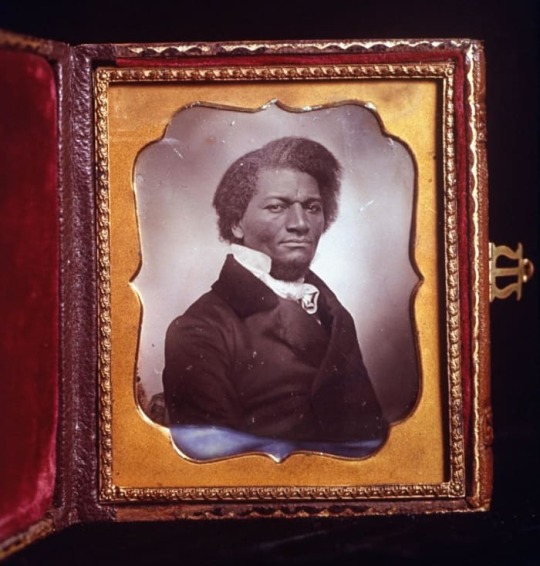
Known as the most important black American leader of the 19th century, Douglass was also a great orator and writer of persuasive power. He was an abolitionist long before the Civil War and even met with President Abraham Lincoln convincing him that “the negro is the stomach of the rebellion”. In other words, if Lincoln frees the slaves he will have more Union soldiers to fight against the Confederacy. After the Emancipation Proclamation takes effect in January of 1863, Douglass recruits black soldiers for the Union. An original hand-signed Leland-Boker edition of the Emancipation Proclamation lives at the Allen County Public Library.
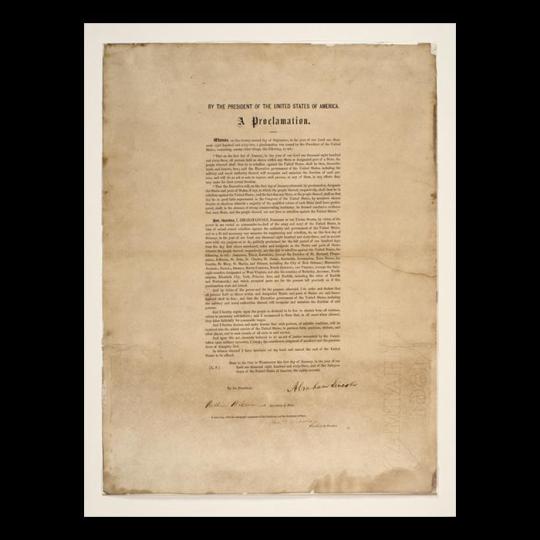
Lincoln valued Douglass’ opinions greatly. Frederick Douglass advocated for issues concerning unequal pay and treatment of African American soldiers and racial inequality. In his book The Life and Times of Frederick Douglass, he wrote,
“Though slavery was abolished, the wrongs of my people were not ended. Though they were not slaves, they were not quite free. No man can be truly free whose liberty is dependent upon the thought, feeling, and actions of others, and who has himself no means in his own hands for guarding, protecting, defecting, and maintaining that liberty.”
Douglass knew the first step to African American independence was the abolishment of slavery, but he knew the equality of whites and blacks would only come with time and with strong leaders to carry-on his legacy. Here is a picture of the abolitionist himself in later years.

In April of 1865, Frederick Douglass along with thousands of people across America mourned the death of President Abraham Lincoln. In Douglass’ eulogy for Lincoln, he strongly states, “…Abraham Lincoln, while unsurpassed in his devotion, to the welfare of the white race, was also in a sense hitherto without example, emphatically the black mans President: the first to show any respect for their rights as men.” Because of this, Douglass gave the citizens of the United States hope for the future; to walk in our martyred President’s footsteps and continue the life Lincoln would have wanted us to live. Below is a picture of Lincoln’s funeral procession in New York.

During Frederick Douglass’ last years he was involved in local politics and served as a marshal for the District of Columbia. His wife of 44 years, Anna Murray, passes away and he remarries Helen Pitts, a white woman. Although his decision to marry Helen stirred controversy, Douglass continued to advocate for the rights of African Americans and even women. He supported Elizabeth Cady Stanton and Susan B. Anthony in their campaign for women suffrage. For reasons such as these we highlight Frederick Douglass’ achievements by composing books to convey his daily struggles and triumphs, teaching it in our classrooms, and continuing to secure the life, liberty, and pursuit of happiness of those Douglass, Lincoln, and many others fought so hard to free.
What is a self-made man? The term was first coined in 1832 by Henry Clay, attorney and lawyer. He represented Kentucky in the U.S. Senate and House of Representatives for over 10 years. He used the phrase “self-made man” to describe individuals of whose success lay within the person themselves, not with outside conditions. One of the most prominent men in history who represented this concept was Benjamin Franklin. He went from a poor, candle maker’s son to a successful businessman and one of America’s most influential Founding Fathers. So, where does Lincoln come in?
Abraham Lincoln was also a self-made man who acknowledged Clay as his “political hero.” He read an abundance of Clay’s political speeches and was greatly influenced by them. Lincoln started reading at a young age and read so much that his parents saw him as “lazy” (Lincoln grew up in a time where working class sons were expected to be working, not leisurely reading. He did go to a local school for brief periods at a time, but he mostly had to stay home and support his family).
Through reading and writing, Lincoln taught himself law and became a lawyer in 1836. His reputation as a lawyer grew and, when he was running for office, his “Honest Abe” persona grew.
A watercolor illustration of what Abe might have looked like at a young age living in Indiana.

Over the course of his lifetime, Abraham Lincoln read over 268 literary works including Shakespeare’s plays, Arabian Nights,Poems by Robert Burns, Journal and Debates of the Federal Constitution by Jonathan Elliot. Many of his own speeches and debates show comments and quotes from other prestigious writers. You can see a full list of what Lincoln read throughout his life as well as more information about the type of literature he enjoyed published through the University of Michigan Library.

Lincoln was known for being an avid reader and most artists liked to represent him as such. One such example of this is in the print by Warren Sallman, Kriebel & Bates.
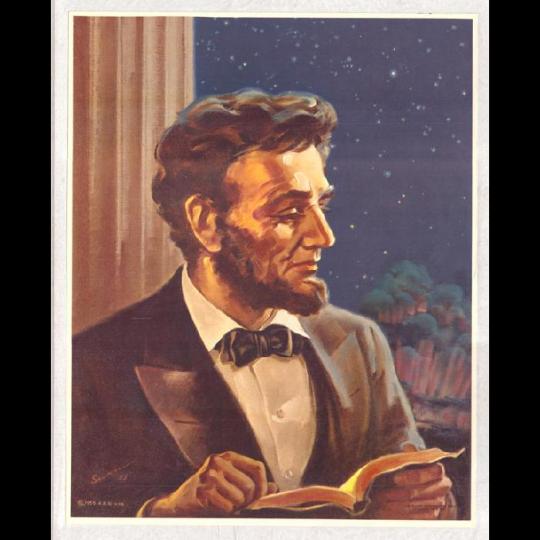
Did you know? While Lincoln was in office from the years 1861-1865, 350 literary works were published in America within that time span including books, poems, plays, and essays.
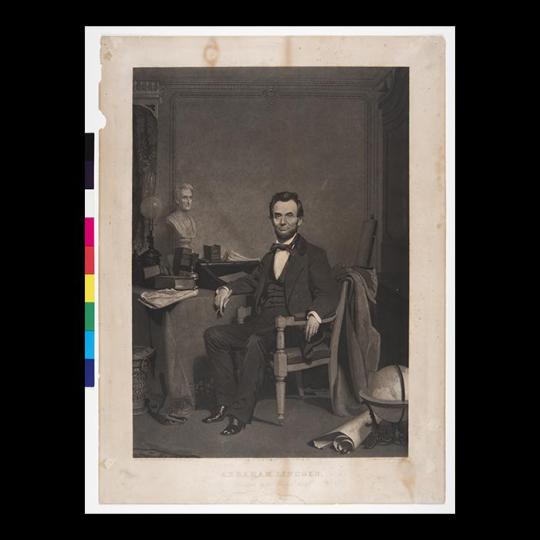
Pictures of Abraham Lincoln almost always include him holding a book or an important document that he had been working on or reading. The picture below shows the capital building in the background as Lincoln is holding an important document.

Abraham Lincoln advocated himself as a self-made man, and literature aided him on his journey to becoming a lawyer as well as one of our greatest presidents in American history.
-K. Mundon, Lincoln Collection Intern
https://www.facebook.com/LincolnCollection/To have a little fun this holiday season, we wanted to share with our wonderful Tumblr followers our 12 Days of Lincoln countdown a bit early! We know the 12 days of Christmas traditionally refer to the days between Christmas and New Year’s but this year, we’d like to use them as a Lincoln Collection Countdown! Join us for the next 12 days as we highlight interesting items in the collection to a well-loved holiday tune.
On the twelfth day of Christmas, Mr. Lincoln gave to me
Twelve Grants a-coming,
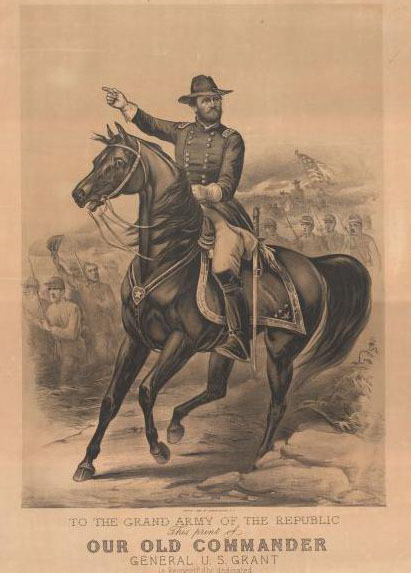
Eleven fifers fifing,

Ten songs of weeping,

Nine ladies dancing,

Eight Tads a-marching,

Seven soldiers singing,

Six McClellans staying,

Five blanket pins,

Four cartoon birds,

Three Dahlgrens,

Two pall bearer gloves

and a Thomas Nast Christmas tree.

For more detailed information about these items and images, check us out this December on Facebook (https://www.facebook.com/LincolnCollection/).
Happy Holidays from the Lincoln Collection!
October is Family History Month as well as Archives Month, so the Lincoln Collection is excited about having such a great month to show off our collection. We’ll be adding more things about the Lincoln family throughout the month.
Mary “Mamie” Lincoln (1869-1938)
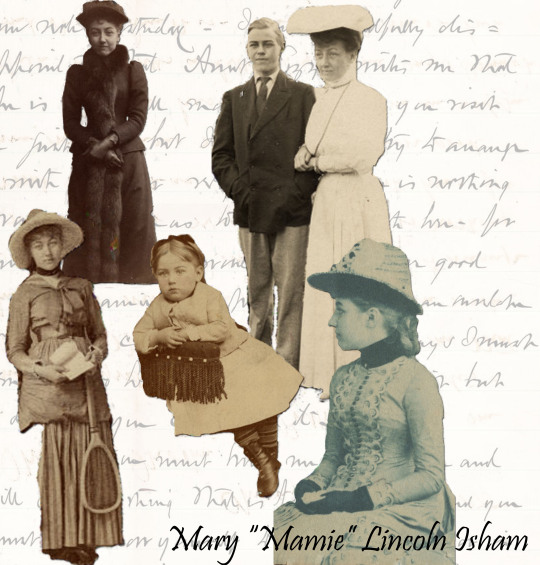
Mary “Mamie” Lincoln, Robert Todd Lincoln’s eldest daughter, was born on October 15th 1869. Mamie would grow up alongside her brother, Jack (Abraham Lincoln II), and sister, Jessie, and would eventually go on to marry Charles Isham and have one son, Lincoln Isham. Mamie spent most of her adult life in New York City and was a choir mother of Grace Church located on Broadway Ave.
Abraham “Jack” Lincoln II

Born in 1873, Jack spent his early years in Chicago with his two sisters, Mamie and Jessie. In 1881, Robert became Secretary of War under Presidents Garfield and Arthur, so the family moved to Washington D.C. At age 16, the Lincolns moved to London because of Robert’s appointment as the ambassador to England. Jack attended school in France, but developed a carbuncle that became infected and caused blood poisoning. Jack died on March 5, 1890 at age 16.
Jessie Lincoln
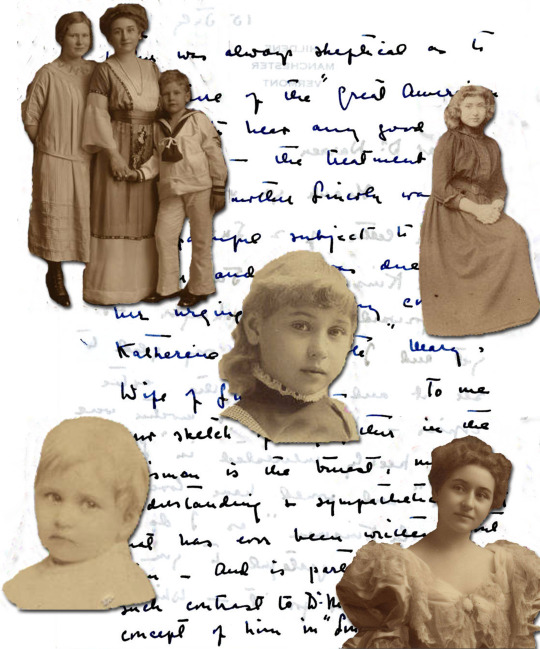
Jessie Harlan Lincoln was the youngest of Robert Todd Lincoln’s children. She was born in Chicago on November 6, 1875 and spent time with her family in Washington D.C. and England with her father’s different government positions. Ultimately, Jessie eloped with Warren Wallace Beckwith and had two children, Mary (Peggy) Lincoln and Robert Todd Lincoln Beckwith (Bud). Jessie went on to divorce Beckwith and marry twice more. In 1946, she moved to the family’s summer estate, Hildene, in Manchester, Vermont. Jessie died in 1948 at the age of 72
Born on May 9th, 1844, Isabella Maria Boyd was born in Martinsburg, Virginia (which would later become West Virginia). She led a fairly typical life for a girl her age: she attended finishing school in Baltimore and was a relatively normal young woman by the time the Civil War began. It is here where her career in spying begins by chance.
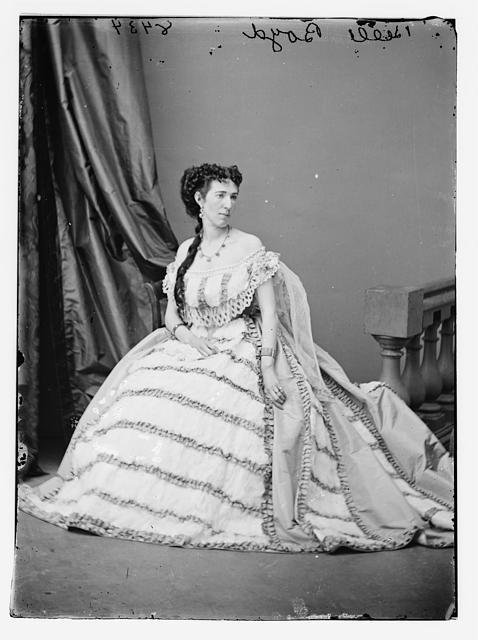
Boyd wrote of her escapades in espionage in a highly exaggerated account, but it details her successes (and ultimate failures) during the Civil War. Her account details the Union forces that came to investigate her house in 1861 because there was rumor that Boyd was housing Confederate flags in her room. She then claims that one of the solider cursed at her mother, which enraged her and forced her to shoot him (he later died, but Boyd was exonerated of murder). The Union forced stationed men around the house, which allowed Boyd to become close to at least one of them (Captain Daniel Keily was the name she gave him in her memoirs).
The stationing of soldiers around her house allowed Boyd to start eavesdropping and learning the ways to pass information. Generally, Boyd passed information to Confederate officers through her slave Eliza Hopewell, who carried the written notes in a hollowed-out watch case. This worked until she was caught early on and threatened with death. She realized she needed a safer route of communication. Belle’s house was located in Martinsburg, West Virginia and has now been made into a museum.
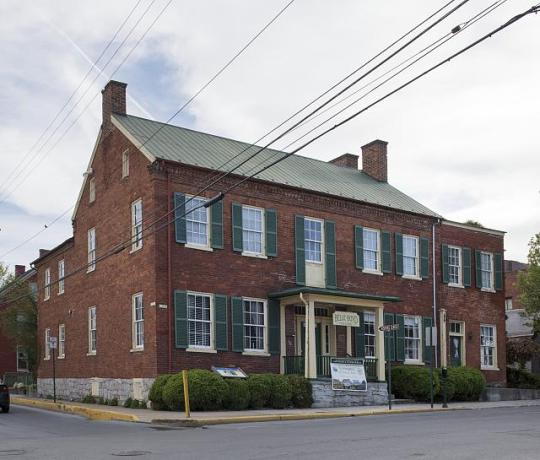
Boyd took sensitive information about Union forces that she had overheard in her parlor directly to Colonel Turner Ashby by bluffing her way through Union lines. For her help, Stonewall Jackson wrote a letter to Boyd saying “"I thank you, for myself and for the army, for the immense service that you have rendered your country today.” She also received the Southern Cross of honor and was awarded a captain and other honorary aide-de-camp positions.
Boyd was arrested at least six times, but managed to avoid jail in each instance. In 1862, Allan Pinkerton, a detective who would go on to create Pinkerton National Detective Agency, assigned 3 men to work the Boyd case to track her down. Boyd continued to evade Pinkerton and his men and began to gain popularity as “La Belle Rebelle” and “the Siren of the Shenandoah” as well as numerous other nicknames.

Though Boyd did exaggerate some of her tales and escapades, she was incredibly famous (and infamous) to both the Union and the Confederate sides. She was hailed as a hero to her rebelling countrymen and was hunted by the North. Boyd was actually arrested 6 times, imprisoned 3 times, and exiled twice. On July 29, 1862, Secretary of War, Edwin Stanton, issues a warrant for her arrest and she was captured and taken to Old Capitol Prison (the current site of the U.S. Supreme Court). She was banished to the Confederate capitol, Richmond. Boyd refused to stay in Richmond and she was arrested again, and banished to Canada, but she decided to head to England instead.

Boyd was more likely in the business to be an adventurer rather than because of her strong commitment to the Confederate ideals. She married two Union men in her lifetime: Samuel Hardinge, a naval officer with whom she had a daughter, Grace, and John Swainston Hammond, with whom she had 4 children (3 that lived past infancy). Boyd published a memoir Belle Boyd in Camp and Prison in 1865 to support herself. She went on to marry Nathaniel High, an actor 17 years younger than her. Boyd was also an actress herself and she died on stage in Wisconsin on June 11, 1900 at age 56.

(All images from The Library of Congress).
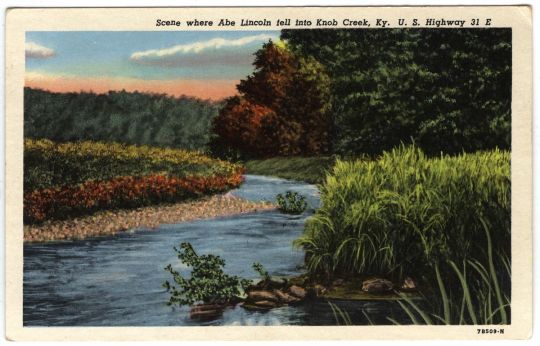
Abraham Lincoln said “my earliest recollection is of the Knob Creek place” in a letter to Samuel Haycraft in 1860. Thomas Lincoln and his family lived on 30 acres of the much larger 228 acres of the Knob Creek Farm. Abraham Lincoln lived here from about 2 and a half years old until he was almost 8, at which point he moved up into Spencer County, Indiana. Young Lincoln grew up and began making some of his earliest memories here. He remembered a stone house he passed while carrying corn up to Hodgen’s Mill, his family’s homestead, a clear stream where he enjoyed fishing, the best places to pick berries, and his first experiences with learning and education.

With so many students and teachers returning to school soon, looking back at Lincoln’s schooling (and lack thereof!) shows some important insight into the 16th president and his learning style that helped him become the president that he would grow to be.

Lincoln spoke of listening to his mother read the Bible and watching her face and she told him stories and it was here at Knob Creek that Lincoln attended school for the first time in his life. For short periods of time, Lincoln and his older sister, Sarah, went to the A, B, C school. The schoolhouse was located about 2 miles north of their home in Knob Creek. When the two Lincolns went to attend school, Abraham was 6 and the classes were only held intermittently. The school had two teachers while Lincoln attended: Zachariah Riney and Caleb Hazel. These frontier schools were subscription or “blab” schools and only lasted for a few months at a time. Free school did not come to Kentucky until the 1830’s.

The learning style Lincoln grew up with is a bit different than current education lesson plans. These “blab” schools were so called because the students would learn their lessons by repeating after the teacher aloud over and over again. This meant that especially reading required students to read aloud. Years later, Lincoln would annoy his law partner, William Herndon, by reading the newspaper out loud because, as he explained, he learned better when he used two senses and because he had learned to process out loud.
When the Lincolns moved to Indiana in December 1816, there were new schools in the area. Abraham and Sara continued their studies as best they could at home until the first school was established year later at Pigeon Creek. This school was about a mile and a quarter south of the Lincoln’s farm and had very meager supplies which meant that there was little learning in the classroom. Lincoln continued to be an avid reader who was toting around books whether he was in school or not. Lincoln read Aesop’s Fables, the Bible, The Pilgrim’s Progress, Robinson Crusoe and Parson Weems’ The Life of Washington. Lincoln also would read the newspaper, hymnals, songbooks, spelling books- basically anything he could get his hands on to.

As Lincoln got older he began to read more challenging works including Shakespeare, poetry, and history. Sometimes, because of his athleticism and his size (6’4” as an adult), Lincoln was perceived as lazy or distracted because of all his reading and writing. Lincoln’s stepmother, Sara, commented that Lincoln did not enjoy physical labor, but he loved to read: “He read so much- was so studious-took so little physical exercise-was so laborious in his studies.”
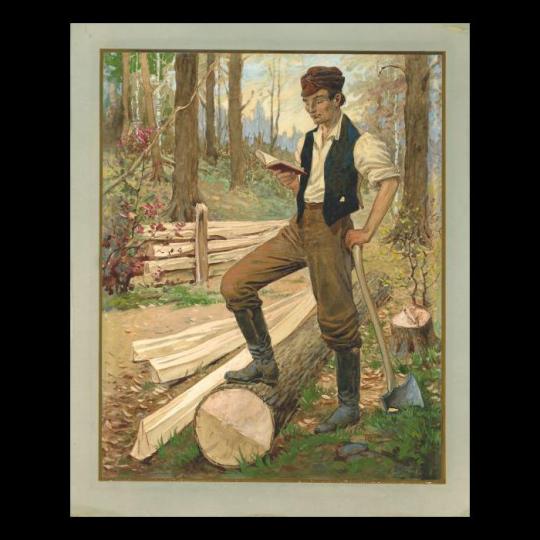
Lincoln’s reading influenced his speaking style as well as his desire to be a ling long learner. Lincoln developed a plain style of speaking that showed a hint of his backwoods upbringing and kept his audiences entertained. Lincoln practiced his orator skills by telling stories and sermon to his family, schoolmates, and members of the local community. By the time he was 21, Lincoln was recognized as “an able and eloquent orator” but he also always carried a bit of his “unrefined” pioneer twang with him throughout his speeches.
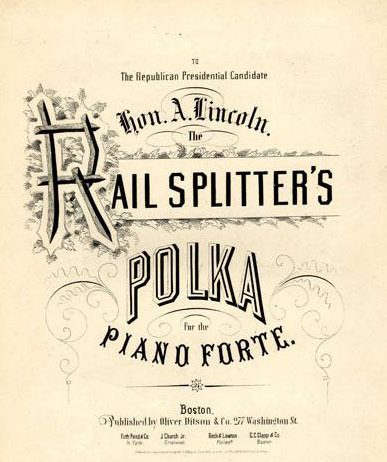
Though the word “polka” brings forth images of accordions, lederhosen, and Oktoberfest, in the 1860’s, polka was a new music trend that was taking Europe and the U.S. by storm. What had started as a folk dance from Bohemia (modern-day Czech Republic) quickly spread across Europe due to the printing of sheet music in the 193o’s. The ability to record the music and share it via sheet music allowed for polka to travel to bands all across Europe. Eventually, the upper classes within the U.S. began to enjoy the new sound from Bohemia. With the influx of immigrants to the U.S. during this period, it’s no surprise that many of them brought along instruments and continued to play music that reminded them of home.
As is true with most songs, the ability to dance as well; and the subject of the music are vitally important. It is of no surprise that many songs have well-known individuals as their topic. The Lincoln Collection has a few polka pieces, generally centered on the 1860 Presidential election. With all the parades, conventions, and speeches, having music to show the prowess and candidacy of someone within the party could be a helpful (and entertaining) push to victory.
For example, “The Rail Splitters Polka” by A. Neuman is one such instrumental polka that focuses around young Lincoln and his “railsplitter” persona.

Another example of a Lincoln-related polka is one by the same name as above, the “Rail Splitters Polka” by Harry L. Tatnall.


Lincoln was not the only candidate that had his own polka music. In 1860, the “Douglas Polka” was written and published by J. Church Jr. about Stephen Douglas, who was on the Northern Democratic ticket for the presidency.

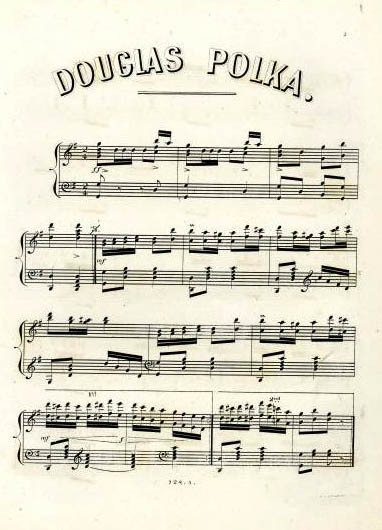
Conventions weren’t the only reason for polka music. Music was composed about events going on, including Sanitary Fairs that were held to raise funds for the United States Sanitary Commission. These uplifting and recognizable sounding songs were both played at the conventions and had their sheet music available afterwards for continued revelry.

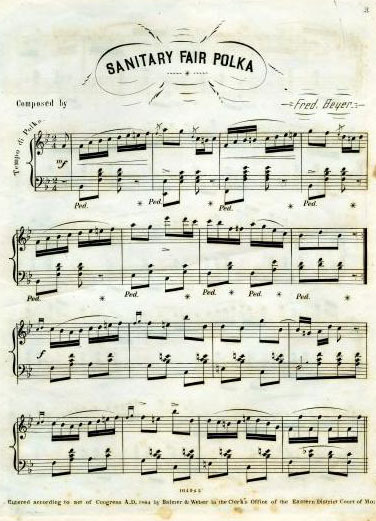
Some polka pieces actually focused on plays that were popular during the day. One is “Our American Cousin Polka”, based on the crowd-pleasing comedy by Tom Taylor. Using popular culture to inform the focus of music, including polka, was not unusual and could also be incorporated in the performances themselves.
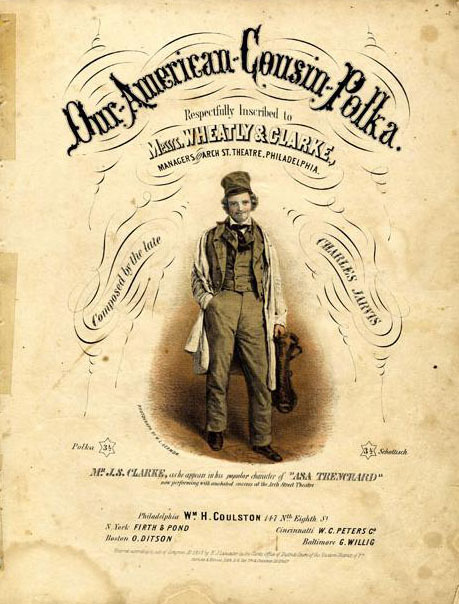

One of the more interesting polka pieces in the Lincoln Collection is one named after Lincoln’s wife: The Mary Todd Lincoln polka. Mary was often criticized for her clothing, decorating, and celebration in a time of warfare (she would have been criticized had she not done any of the aforementioned things, though). With the upcoming White House Ball in February of 1862, Lincoln enlisted Francis M. Scala, the leader of the Marine band, to play at the reception.

One of the songs played that night was the “Mary Todd Lincoln Polka.” The sheet music was hidden within the Lincoln Collection, and you can hear the full music here: http://contentdm.acpl.lib.in.us/digital/collection/p15155coll1/id/2343/rec/1
